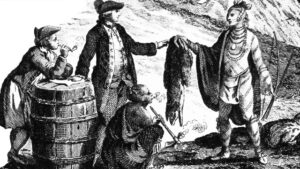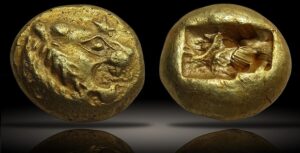Lesson 2: Early Forms of Money
Before we had paper bills and digital bank accounts, early human societies had to find ways to facilitate trade. Barter was the first system of exchange, but it came with significant limitations. In a barter system, one person exchanges an item they have for something they want from another person. However, this system requires both parties to want what the other has—something economists call the “double coincidence of wants.” For example, if you’re a farmer with a surplus of grain, but you need a new pair of shoes, you would need to find a shoemaker who wants grain in exchange for shoes. This is often difficult and inefficient.

To overcome this problem, early humans began to use commodities as a medium of exchange. These were items that had intrinsic value—things that people already valued in their everyday lives, such as livestock, salt, shells, or precious metals. These commodities acted as a stand-in for goods that people wanted to exchange. For example, salt was valuable not just because it could be used to preserve food, but also because it was scarce and difficult to produce, making it an effective store of value.
One of the first major shifts in money history occurred when societies began to use metal coins as currency. The ancient Lydians (in what is now Turkey) are credited with creating the first metal coins around 600 BCE. These coins were made from electrum, a natural alloy of gold and silver, and their value was determined by their weight and the metal used. Coins made trade easier because they were durable, portable, and could be standardized. No longer did people have to weigh out the value of salt or cattle every time they wanted to exchange goods. Instead, they could use coins, each of which was guaranteed to have a certain value.

The use of metal coins spread quickly across the ancient world, and by the time of the Roman Empire, coins had become the dominant form of money. Roman coins were made of silver and gold, and the government issued them in standardized denominations. These coins were used not only for trade within the empire but also to pay soldiers, collect taxes, and maintain control over conquered territories. The Roman Empire’s reliance on coins was so successful that the word “currency” itself comes from the Latin word “currere,” meaning “to run” or “to flow,” reflecting how money circulated throughout the empire.
However, the widespread use of metal coins also presented challenges. For one, coins were heavy and cumbersome to carry in large quantities. This was especially problematic for merchants conducting long-distance trade or for governments managing large transactions. To solve this issue, ancient societies began to experiment with forms of money that were even more portable and convenient.
